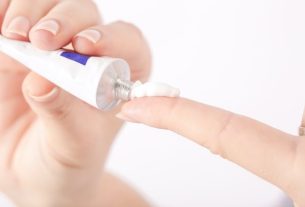Gonorrhea is a sexually transmitted infection (STI) and, therefore, its main form of contagion is through unprotected sexual intercourse. However, transmission from mother to baby can also occur during childbirth, when gonorrhea is not identified and/or treated correctly.
Therefore, to prevent the transmission of the disease, it is important to use a condom during all sexual relations, in addition to undergoing treatment according to the doctor’s instructions, as this way it is possible to guarantee the elimination of the bacteria and prevent reinfection.
Infection with gonorrhea bacteria leads to the appearance of symptoms such as yellowish-white discharge, pain or burning when urinating, inflammation of the anus or throat, and it is important that a doctor is consulted to begin the most appropriate treatment. Learn more about gonorrhea.

How transmission happens
The most common ways to get gonorrhea include:
- Unprotected sexual contactwhether vaginal, anal or oral, and can be transmitted even if there is no penetration;
- From mother to child during birthespecially if the woman has not been treated for the infection.
Furthermore, another rarer way of transmitting the infection is through the contact of contaminated fluids with the eyes, which can happen if these fluids are on the hand and the eye is scratched, for example.
Gonorrhea is not transmitted through casual contact, such as hugs, kisses, coughing, sneezing or sharing eating utensils.
How to avoid getting gonorrhea
To avoid gonorrhea, it is important that sexual intercourse takes place using a condom, this way it is possible to avoid contagion with the Neisseria gonorrhoeae and with other microorganisms that can also be transmitted sexually and lead to the emergence of diseases.
Furthermore, anyone with gonorrhea must receive appropriate treatment, not only to avoid passing the disease on to other people, but also to avoid complications such as infertility and an increased risk of contracting other STIs. Understand how gonorrhea is treated.
How to know if I have gonorrhea
To find out if you have gonorrhea, it is important to take tests to identify the presence of the bacteria, because in most cases gonorrhea does not cause symptoms.
Therefore, if a person has had unprotected sexual intercourse, the best thing to do is ask the gynecologist or urologist to carry out tests for sexually transmitted infections, including a test for gonorrhea.
However, in other cases gonorrhea can lead to the appearance of signs and symptoms about 10 days after contact with the bacteria responsible for the disease, the Neisseria gonorrhoeae, there may be pain or burning when urinating, low fever, obstruction of the anal canal, if there has been anal intimate intercourse, sore throat and voice impairment, if there has been oral intimate intercourse, and low fever. Know how to identify all the symptoms of gonorrhea.
Additionally, men may experience yellow, pus-like discharge coming from the urethra, while women may experience inflammation of the Bartholin glands and yellowish-white discharge.
Online symptom test
To find out the chances of having gonorrhea, please select the symptoms you present:
This test is only a guidance tool and is not intended to provide a diagnosis or replace consultation with an infectious disease specialist, gynecologist or urologist.
Bibliography
- MORGAN, Mackenzie K.; DECKER, Catherine F. Gonorrhea. Disease-a-Month. Vol.62(8). 260-268, 2016
- PAPADAKIS, Maxine A.; MCPHEE, Stephen J.; RABOW, Michael W. Current Medical Diagnosis & Treatment 2019. 58th. NEW YORK: McGraw-Hill Education, 2019.
- BOSTON PUBLIC HEALTH COMMISSION. Gonorrhea. 2018. Disponível em: <https://bphc.org/whatwedo/infectious-diseases/Infectious-Diseases-A-to-Z/Documents/Fact%20Sheet%20Languages/Gonorrhea/Portuguese.pdf>. Acesso em 17 mar 2020
- BRAZILIAN SOCIETY OF INFECTOLOGY. Gonorrhea. Available at: <https://www.infectologia.org.br/pg/986/gonorreia>. Accessed on March 17, 2020
- BARRER, Michael R et al. Medical Microbiology: A guide to microbial infections – pathogenesis, immunity, laboratory investigation and control. 19 ed. Elsevier, 2018. 264-266.

Sign up for our newsletter and stay up to date with exclusive news
that can transform your routine!
Warning: Undefined array key "title" in /home/storelat/public_html/wp-content/plugins/link-whisper-premium/templates/frontend/related-posts.php on line 12
Warning: Undefined array key "title_tag" in /home/storelat/public_html/wp-content/plugins/link-whisper-premium/templates/frontend/related-posts.php on line 13




